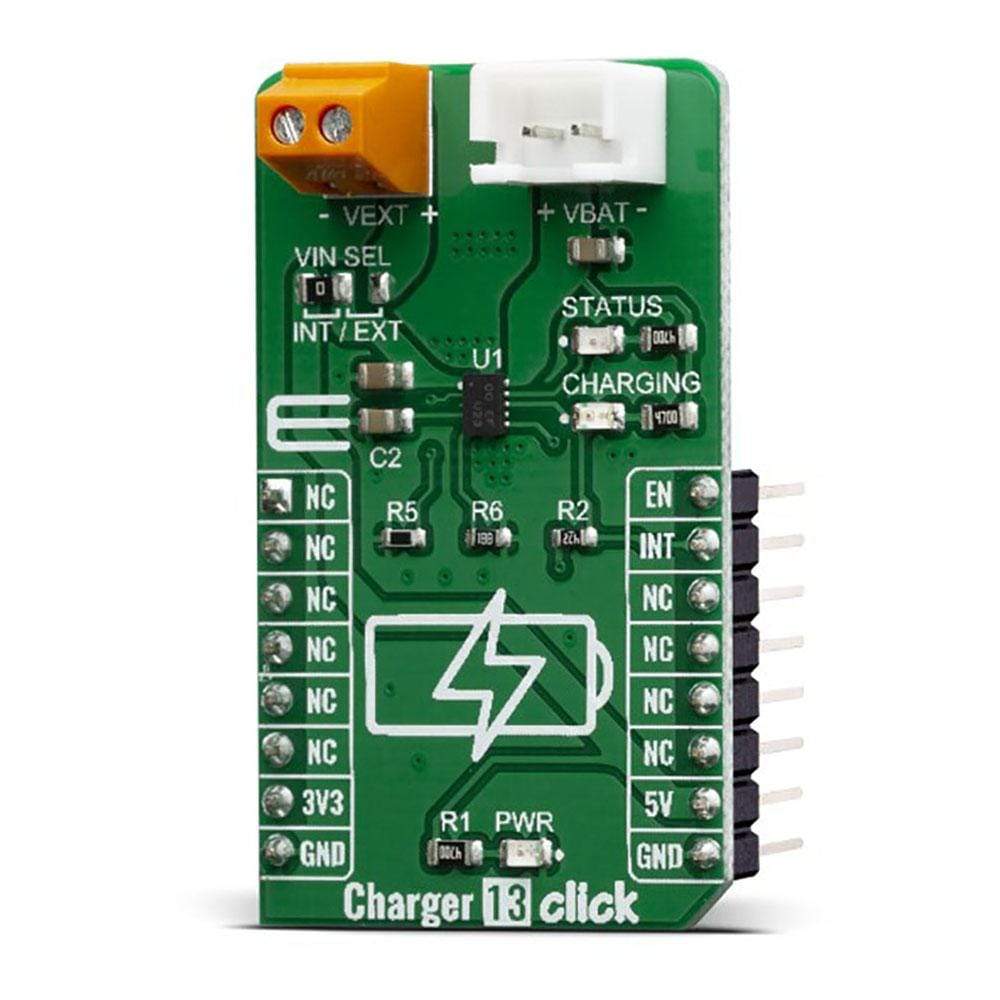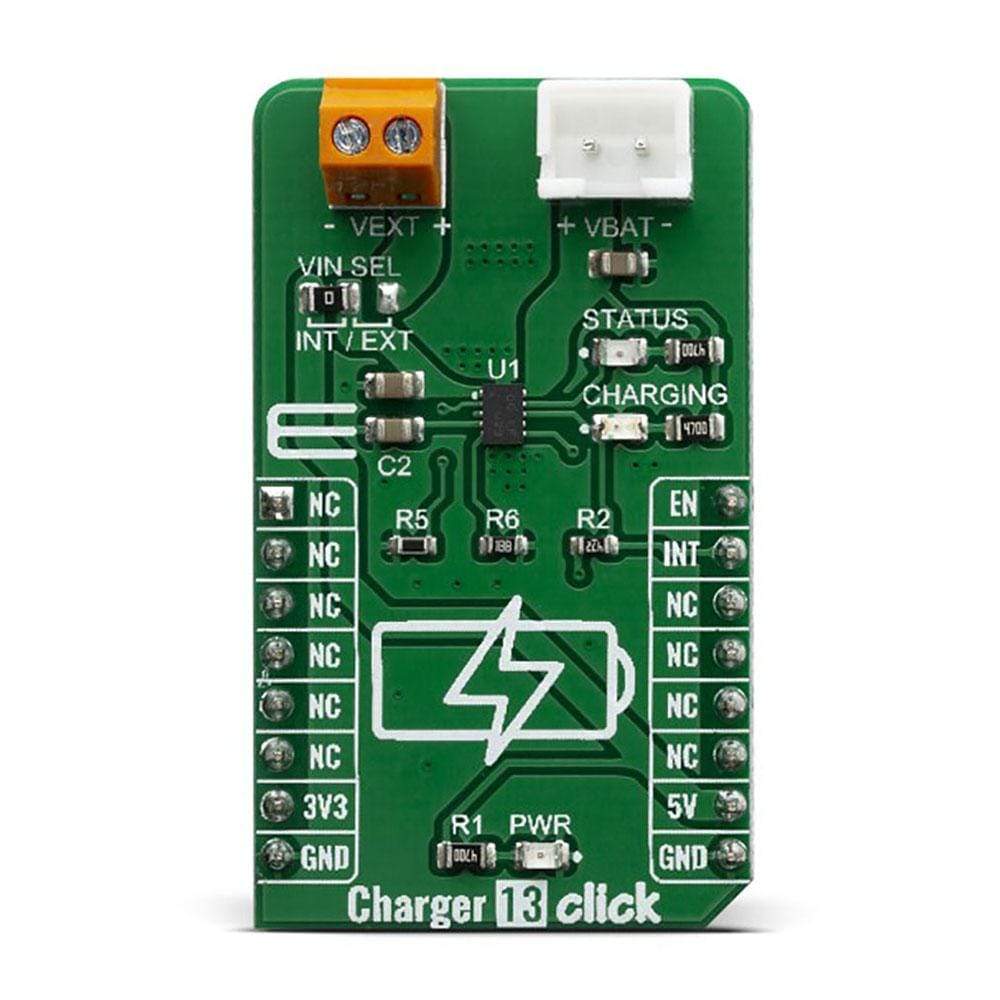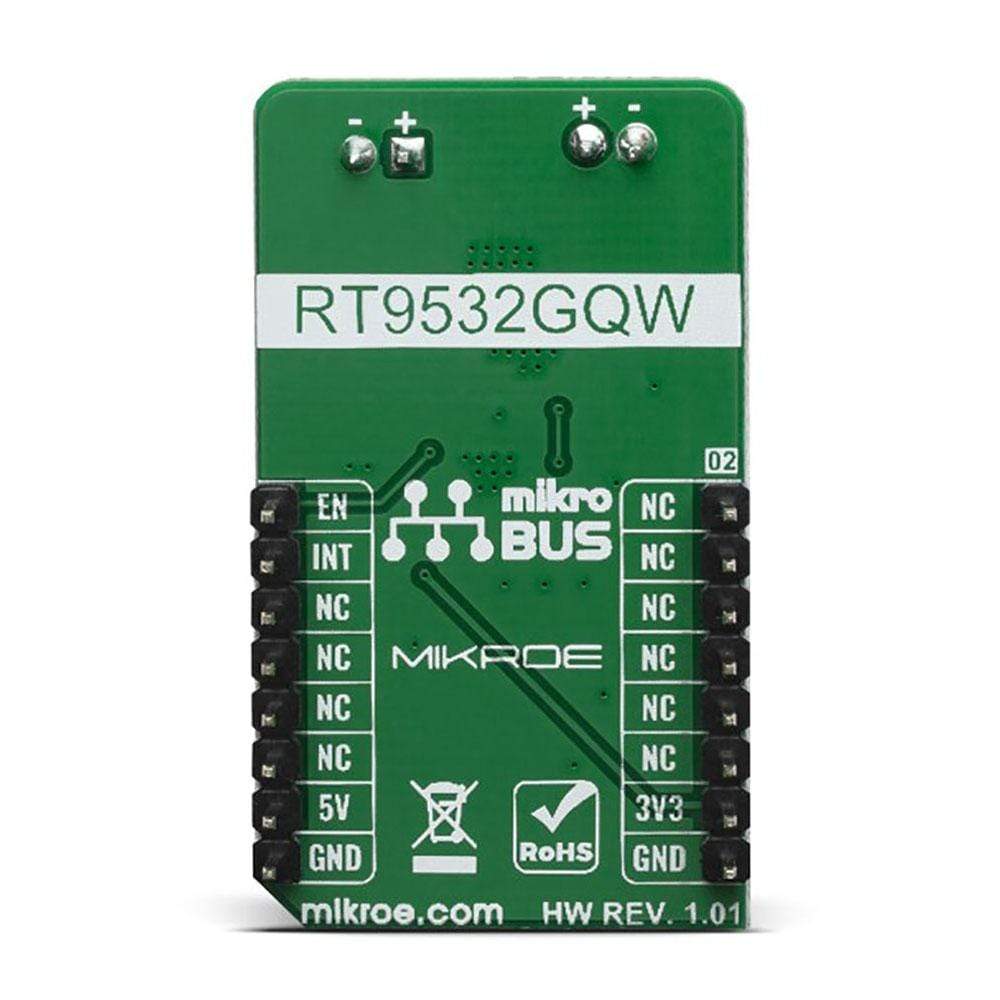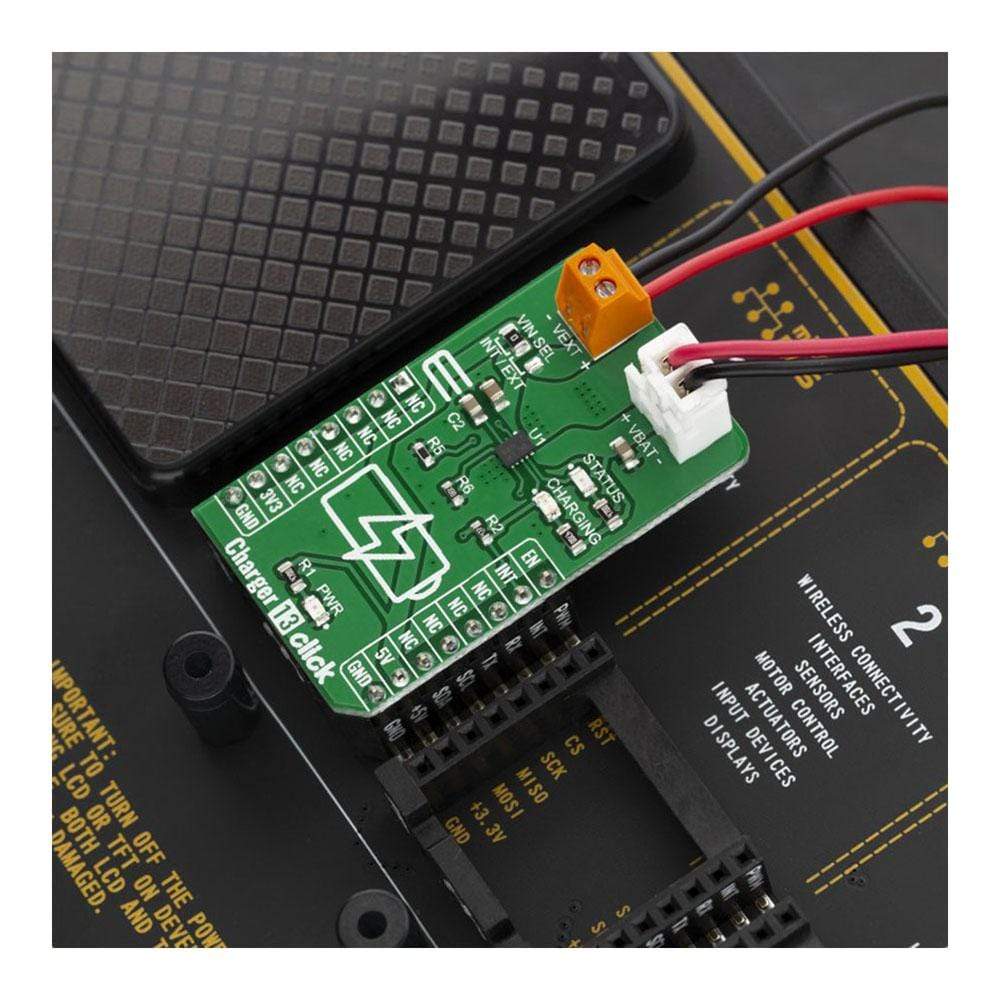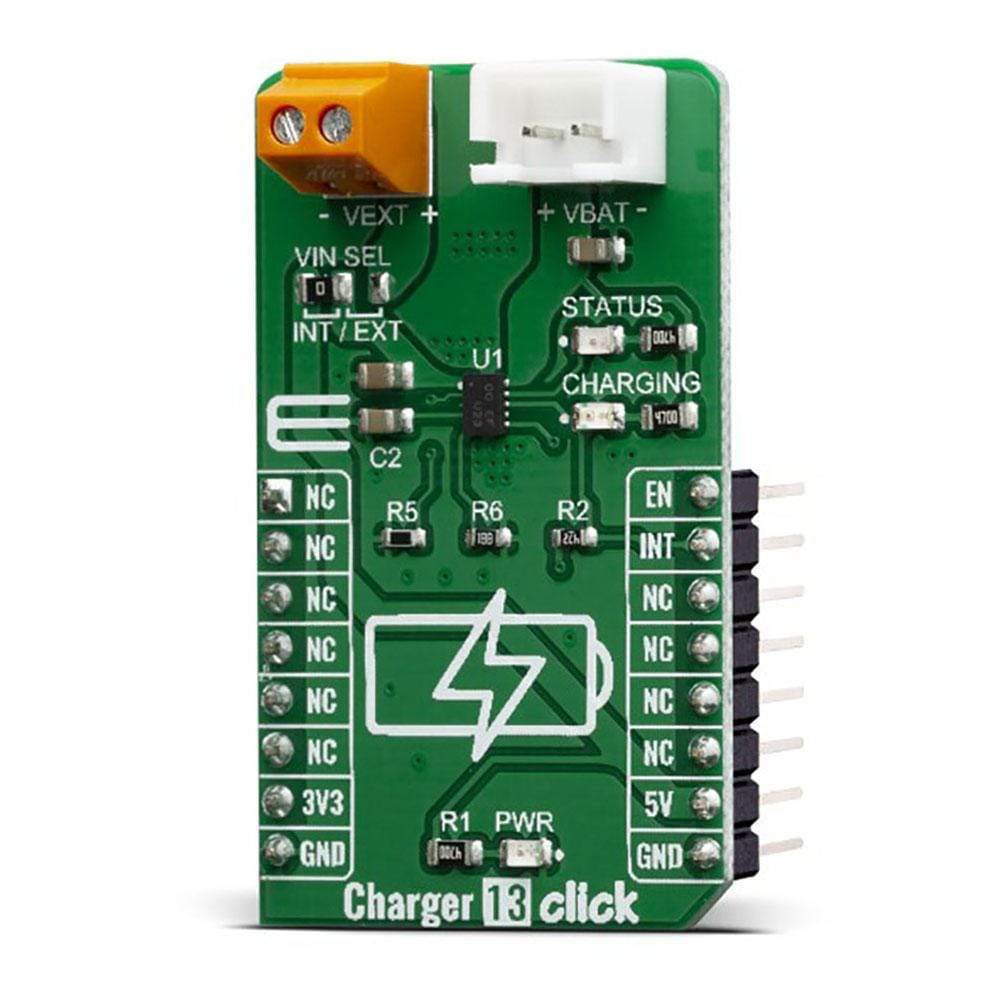
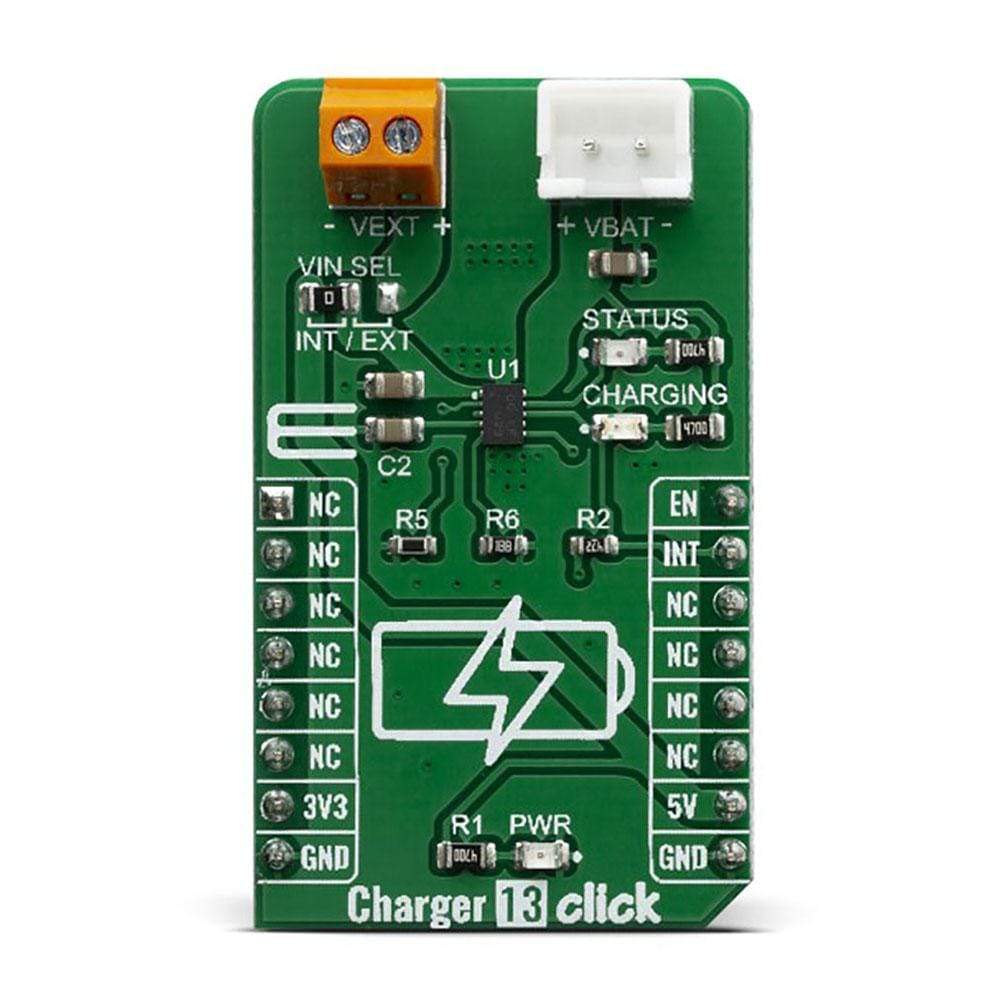
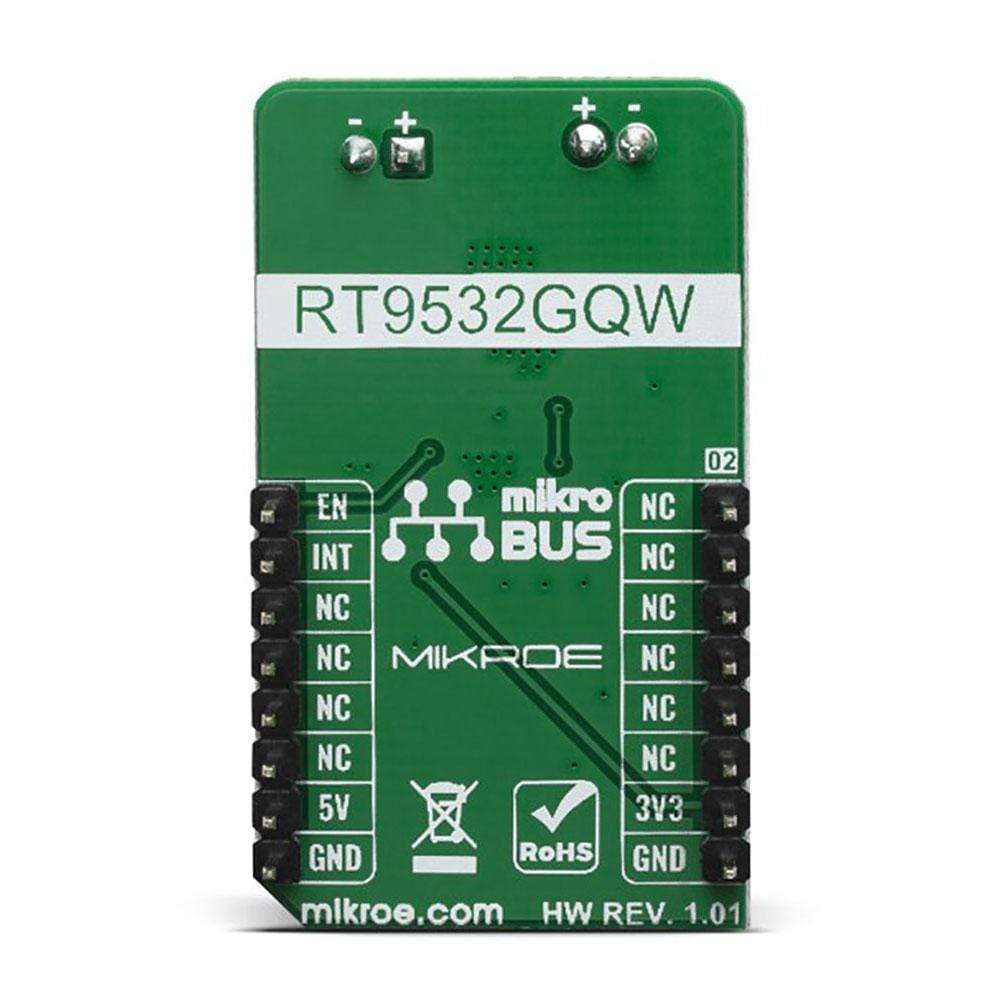
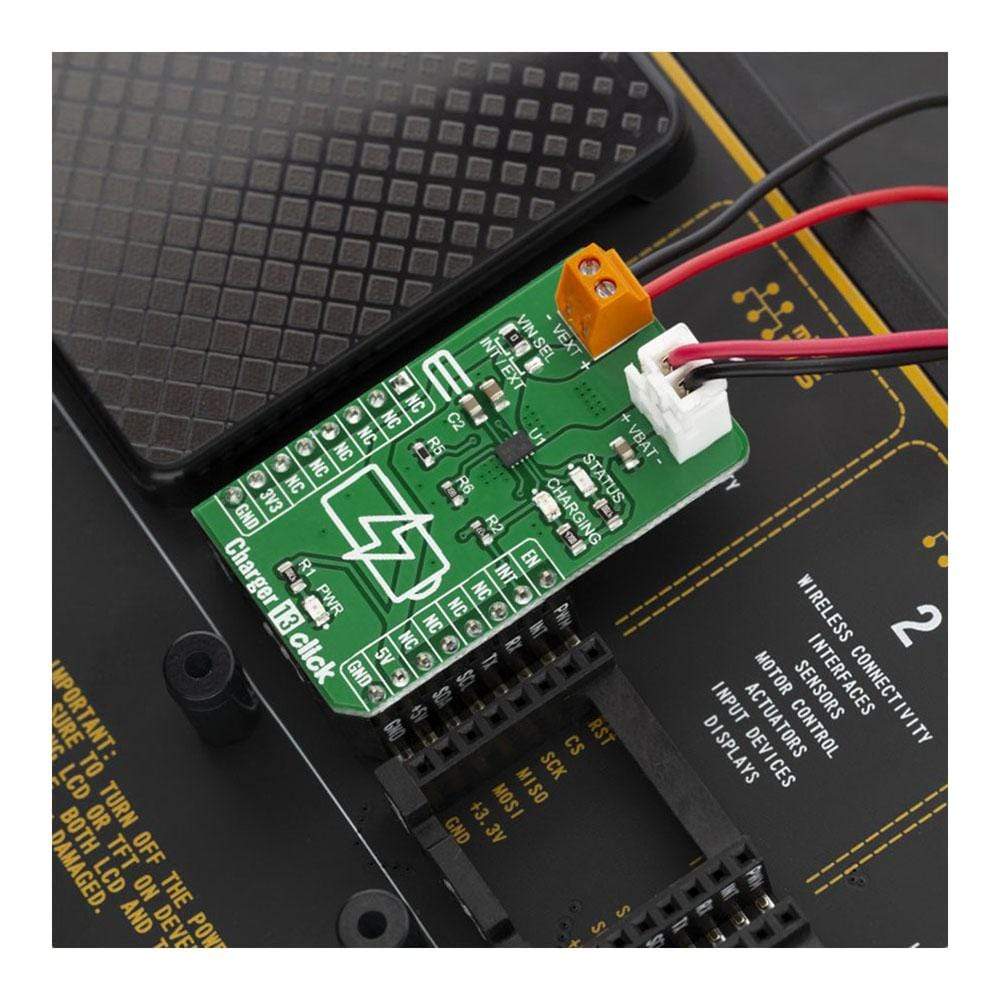
Overview
The Charger 13 Click Board™ is a single lithium-ion (Li+) cell battery charger. This click can be used for Low-Cost Li-Ion battery chargers, or Power Tools, toys, backup energy storage solutions, etc. The Charger 13 Click is based on the RT9532GQW battery charger IC, which has some extra features enabling charging without too much hassle. This IC has an internal switching-mode regulation with input current limiting, allowing it to use an external power supply from a cheap wall adapter, rated up to 28V. On the board, there is a Power LED and two extra LED’s which can be used for charging indications.
The Charger 13 Click is supported by a mikroSDK compliant library, which includes functions that simplify software development. This Click Board™ comes as a fully tested product, ready to be used on a system equipped with the mikroBUS™ socket.
Downloads
Le Le chargeur 13 Click Board™ est un chargeur de batterie à cellule unique lithium-ion (Li+). Ce click peut être utilisé pour les chargeurs de batterie Li-Ion à faible coût, ou les outils électriques, les jouets, les solutions de stockage d'énergie de secours, etc. Chargeur 13 Clic est basé sur le circuit intégré de chargeur de batterie RT9532GQW, qui possède quelques fonctionnalités supplémentaires permettant de charger sans trop de problèmes. Ce circuit intégré dispose d'une régulation interne en mode de commutation avec limitation du courant d'entrée, ce qui lui permet d'utiliser une alimentation externe à partir d'un adaptateur mural bon marché, évalué jusqu'à 28 V. Sur la carte, il y a une LED d'alimentation et deux LED supplémentaires qui peuvent être utilisées pour les indications de charge.
Le Chargeur 13 Click est pris en charge par une bibliothèque compatible mikroSDK, qui comprend des fonctions qui simplifient le développement logiciel. Cette Click Board™ est un produit entièrement testé, prêt à être utilisé sur un système équipé du socket mikroBUS™.
| General Information | |
|---|---|
Part Number (SKU) |
MIKROE-3748
|
Manufacturer |
|
| Physical and Mechanical | |
Weight |
0.018 kg
|
| Other | |
Country of Origin |
|
HS Code Customs Tariff code
|
|
EAN |
8606018716951
|
Warranty |
|
Frequently Asked Questions
Have a Question?
Be the first to ask a question about this.

